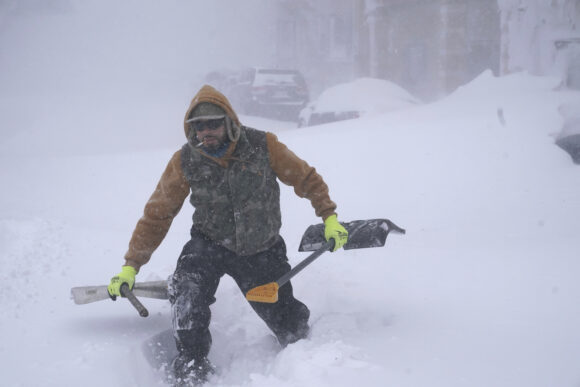More than half of the U.S. and parts of Canada, home to around 180 million people, could fall short ofelectricity during extreme cold again this winter due to lacking natural gas infrastructure, the North American Electric Reliability Corp (NERC) said on Wednesday.
In its 2023-24 winter outlook, the regulatory authority warned that prolonged, wide-area cold snaps threaten the reliability of bulk power generation and availability of fuel supplies for natural gas-fired generation.
“Recent extreme cold weather events have shown that energy delivery disruptions can have devastating consequences for electric and gas consumers in impacted areas,” NERC said.
It put the U.S. Midwest, Northeast, Mid-Atlantic, and South, along with some Canadian provinces, at the highest risk for electricity supply shortages this winter.
Grid operators like Midcontinent ISO, PJM Interconnection, SERC Reliability Corp and Texas’ ERCOT are vulnerable to generators going offline under extreme cold conditions, NERC said, adding that cold weather could also choke off gas pipelines in New England that has limited gas infrastructure.
“There is not enough natural gas pipeline and infrastructure to serve all the gas generation in certain big areas like PJM, MISO, New York, and New England,” John Moura, NERC’s director for reliability assessment and performance analysis, said during a media briefing.
NERC also found that load forecasting in winter is growing in complexity, and underestimating demand is a risk to reliability in extreme cold temperatures.
NERC, along with the Federal Energy Regulatory Commission, on Tuesday urged lawmakers to fill a regulatory blind spot to maintain a reliable supply of gas during extreme cold that was highlighted by an inquiry into power outages during Winter Storm Elliott in December 2022.
During Elliott, both electric and gas systems in much of the eastern half of the U.S. experienced significant stress, resulting in unplanned generation losses, with around 90,500 megawatts out at the same time, the inquiry found.
Flows of gas into pipelines were reduced during Elliott, while demand for the fuel for heating and power generation increased, dramatically lowering line pressures. That gas system only narrowly avoided significant outages.
In New York City, Consolidated Edison declared an emergency because it faced a system collapse that would have taken “many months” to restore service in the middle of the winter.
Top photo: Travis Sanchez trudges over a snowdrift with a pair of shovels for a stranded motorist on Chenango Street in Buffalo, N.Y. on Saturday, Dec. 24, 2022. (Derek Gee/The Buffalo News via AP)
Was this article valuable?
Here are more articles you may enjoy.


 What The Return of California’s ‘Death Discount’ Means for Litigation
What The Return of California’s ‘Death Discount’ Means for Litigation  Billionaire NFL Owner Suing Over Billboards Near His SoFi Stadium
Billionaire NFL Owner Suing Over Billboards Near His SoFi Stadium  US Lawmaker Unveils Bill Requiring Manual Car-Door Releases
US Lawmaker Unveils Bill Requiring Manual Car-Door Releases  Musk’s X Probed by UK Over Grok’s Thousands of Sexualized Images
Musk’s X Probed by UK Over Grok’s Thousands of Sexualized Images 